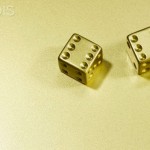Neil Johnson starts his fantastic book on complexity with the following story in the preface:
It is 2050, and you are watching Who Wants to be a Billionaire?
The contestant is one question away from the jackpot. Up comes his question: “What is the name of the theory that scientists started developing at the beginning of the twenty-first century, and which helped the world overcome traffic congestion, financial market crashes, terrorist attacks, pandemic viruses, and cancer?”
The contestant cannot believe his luck. What an easy question! But he is so nervous that his mind temporarily goes blank.
He starts to consider option A: “They are all still unsolved problems” – but then quickly realizes that this is a dumb answer.
Instead, he uses his last lifeline to ask the audience. The audience responds unanimously and instantaneously with option B: “The Theory of Complexity.”
Without hesitation, he goes with option B. The host hands him the cheque, and the world has yet another billionaire.
The above story could be considered as a fantasy. But whoever knows the idea behind the complexity and the complex systems would confirm it as a plausible scenario.
Human understanding of the world can be divided into three distinct ages:
Mythologic World or Primitive Dualistic View
The mythological view of the world seems to be started with the appearance of Homo Sapiens. The Olympian Gods and Greek mythology are the best evolved and excellent examples of this view.
Here we face with two parallel and separate worlds, communicating with each other, but mostly from the divine world downward.
The whole world was ruled by the other world that was full of conflicts and wars between the Gods and Goddesses who were trying to satisfy their human desires projected by humans onto them.
I’d like to call it the dualistic view as the most people felt that their world is continually interacting with another world ruling them and moving them from the past to the future.
The Mystic World or Evolved Dualistic View
Here we are again faced with a dualistic view. But it’s evolved and transcended into a new level.
New we have a visible physical world with an invisible spirit that brings it to life. This spirit in infused in the material and the material becomes a living entity.
So we see plants and animals with physical bodies and spirits and stones and many [other solid materials as dead objects. However, there is a broad range of speculations about the reality of this dualism.
From more mechanical views dividing the world between living entities and non-living entities to the more mystical views considering walls and stones as living things.
Why did we need to see the world through such a complicated lens? It helped us to describe the non-predictable part of the environment.
Any observer of any complex system who is not able to explain and predict its behavior will be tempted to adopt a dualistic view to justify the unpredictability of the object and autonomy of a subject.
The complex and realistic view
Here we must distinguish between complicated systems and complex systems.
The former refers to a system that is complicated by design, and the latter refers to many simply designed components interacting with each other and showing a complex behavior.
So a complicated system has both a hard-to-understand logic and a hard-to-predict behavior, but a complex system has an easy-to-understand logic that sometimes leads to hard-to-predict behaviors.
Here the autonomy of a system finds a new meaning: our inability to predict its behavior. It means that the autonomy is not a feature of the subjects, but a quality of the relationship between the observer and the objects.
Complex systems and the complexity science is developed for helping us to develop and evolve and nurture this relationship. It will help us to adapt ourselves to the environment better than before and to push the whole world – including ourselves – to the next stages of the transcendence.






